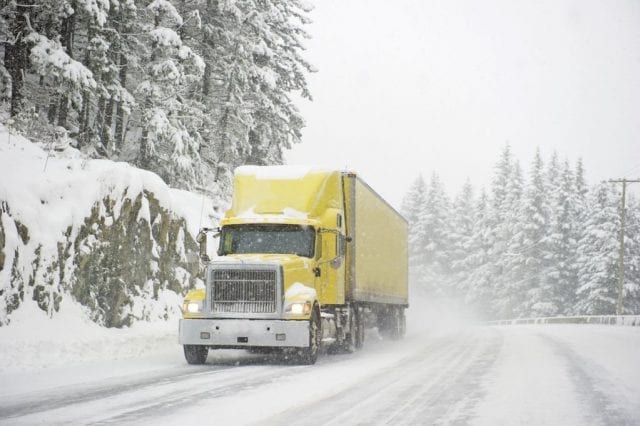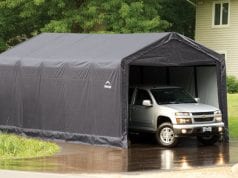
As winter arrives, we can witness big drops in temperature, storms, strong wind, frosts and snow. These cold snowstorms tend to cover the roads across the United States making it difficult to drive on them, since ice and snow have a direct influence on how we drive and also affects our known driving skills, although it specifically adds an extra challenge to commercial trucks, which are already tricky to maneuver, even under regular weather.
So, it’s no surprise that truck drivers need to be extra cautious during this season of the year, which is considered the most dangerous when we talk about driving. Not just regarding the conditions of their truck and how they prepare it for a trip on a snowy road and being familiar with the roadway, but also on how they have to change their usual driving techniques taking a lot of precautions. Doing all this can avoid a serious accident and even save their life.
Sadly, companies have to keep working even during these harsh weather conditions. So, commercial truck drivers need to take into consideration all possible weather conditions that may affect their trip, to avoid unexpected surprises. Some of these commercial truck accident factors, according to the personal injury lawyers at Rutter Mills are:
Snow

The mixture of snow with ambient dust, smoke and asphalt grease forms a slippery mass that is detrimental to vehicles. On the other hand, although the snow is newly fresh, the low temperatures harden it, forming dangerous ice sheets.
Ice sheets
An interesting and important fact is that ice sheets do not only form during snowstorms. They can also appear during hurricanes because of the excessive water plus low temperatures. The most dangerous thing is that they can hardly be seen on the asphalt, so drivers need to pay a lot of attention. It has been noted that during the last hours of the day and at dawn is when they tend to form more frequently, and mostly under bridges as well.
Wind

Drivers must be especially careful with wind gusts; because it tends to be unpredictable in most cases affecting the truck’s movement. It is best to moderate the speed and keep a firm hold of the steering wheel avoiding any distractions.
Now that you are aware of these external factors, we will give you some tips on driving safely during the winter season:
Check the weather forecast
Whenever you are going to make a car journey in winter, check the weather forecast and snow reports beforehand. It will help you plot the route in advance and equip your vehicle with everything you need.
Check your truck 
Before going on a trip, truck drivers must properly check all their liquid levels (oils, engine fluid, etc.). Don’t forget to check the antifreeze as well. Some people even recommend flushing the old one and completely replace it with a new one. Also, pay special attention to the direction of the car and the brakes (discs and pads). Keep your windscreen wipers in good condition to make sure that they will pull snow efficiently, It’s of vital importance.
Tires
Tires are essential when you travel on snowy roads, they help trucks have a stronger grip to the ground. Although not all truck tires are suitable for chains, there is another option of using special snow tires that have the same function. So, if you are going to drive on snowy terrain with some frequency its use is more than recommended. Your tread should be at least 1.6mm thick, this will help you avoid slipping.
Traction
Ice and snow have a direct influence on grip and driving, a truck with the right traction increases road safety. A traction system distributes the torque between the front and rear axle and selectively breaks the wheels with a low grip, optimizing traction at all times. This ensures an optimal trajectory and improves vehicle control during slippery roads on ice or snow.
In addition, its efficiency is also put into practice when starting out on slippery terrain, as it uses data from different sensors that measure the number of wheel revolutions, steering wheel rotation, rotational speed and transverse acceleration of the vehicle making the most of the available grip.
Adapted driving styles

Like we mentioned before it is really important that a commercial truck driver adapts to the weather condition where he or she is. This also includes driving slower than usual, and if possible, under the speed limit.
Because even driving at the legal speed limit can be too dangerous for the current condition of the road. Since trucks are way bigger than regular vehicles, they are harder to maneuver and control during abrupt accidents
If a truck driver is going to be on long trips on snowy areas, it is highly recommended to get a proper insurance plan that covers accidents involved in snow, just as a precaution. These accidents are sometimes imminent because of the negligence of other drivers and not directly your fault. Do your part, take precautions, and be safe!






